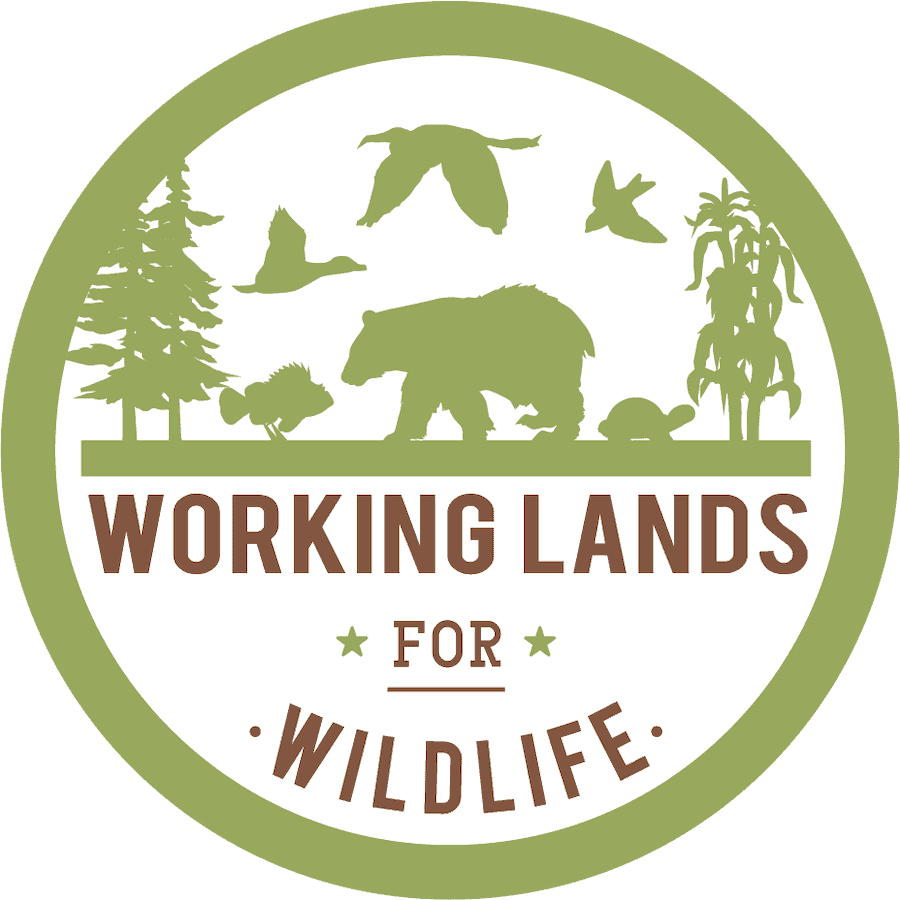-
Healthy Sagebrush Communities Poster
-
by
Tab Manager
—
published
May 29, 2025
—
filed under:
Landowner Resources,
WLFW,
Working Lands for Wildlife West,
Working Lands for Wildlife,
Landowner Information,
Resources
Restricted to 5 copies outside of NRCS. This one-sided 32X21 hand-drawn Healthy Sagebrush Communities poster showcases how locally led, partnership-based, science-driven efforts can make great strides in conserving at-risk wildlife and America’s western rangelands. The threats, outcomes, data, and solution highlighted on the poster are derived from 15 years of research and conservation on the ground through NRCS’ Working Lands for Wildlife and its Sage Grouse Initiative. It shows the connections between people, the land, wildlife, conservation, science, and rural economies for a healthy sagebrush ecosystem. Enhancing private lands where sagebrush habitat is intact and sage grouse numbers are highest benefits agricultural producers and 350 other species that depend on it.
Located in
Landowner Information
/
Landowner Resources
-
 Reconnecting Cattle and Quail
Reconnecting Cattle and Quail
-
by
Admin
—
published
May 06, 2021
—
filed under:
WLFW,
Livestock,
Northern Bobwhite Quail,
Instructional Video,
Landowners,
Video,
Cattle,
Working Lands for Wildlife,
Landowner Information,
Grazing,
Native Grasslands
Learn about the Working Lands for Wildlife program and work in Ohio between USDA-NRCS and local farmers and ranchers. Grazing cattle on warm season, native grasses is great for cattle as well as critical species like the Northern Bobwhite Quail. Video for landowners and cattle producers.
Presented by Nick Schell (USDA-NRCS Ohio) and Dr. Pat Keyser (UT - Center for Native Grasslands Management) at the Ohio Forage and Grassland Council Conference in 2017.
Located in
Learning & Tech Transfer
/
Webinars & Videos
-
 Forage for Beef and Bobs
Forage for Beef and Bobs
-
by
Admin
—
published
Dec 30, 2020
—
last modified
May 14, 2021 04:26 PM
—
filed under:
Landowner Information,
WLFW,
Instructional Video,
Cattle,
Pasture,
Working Lands for Wildlife,
Farming,
Native Grasslands
Learn about the benefits of native grasses for beef cattle production and wildlife in Virginia. This short video (4 min) is especially relevant for beef producers and farmers. Brought to you NRCS Virginia.
Located in
Learning & Tech Transfer
/
Webinars & Videos
-
 What to Expect During a Conservation Project: A Landowner’s Perspective
What to Expect During a Conservation Project: A Landowner’s Perspective
-
by
Brian Rhodes
—
published
Dec 31, 2024
—
last modified
Jun 04, 2025 11:32 PM
—
filed under:
Aquatics,
WLFW,
Stories,
Landowners,
Landowner Information
Taking on a conservation project is a meaningful way to improve the health of your land while contributing to the broader environmental good. However, the process can seem complex and unfamiliar at first. Understanding what to expect can help you approach the project with confidence and clarity. This guide walks through each journey stage, offering a detailed look at what happens and how you’ll play a central role.
Located in
Stories
-
 More Quail Per Bale: Precision Conservation for a More Sustainable Future
More Quail Per Bale: Precision Conservation for a More Sustainable Future
-
by
Admin
—
published
Dec 30, 2020
—
last modified
Apr 21, 2023 02:03 PM
—
filed under:
Landowner Information,
WLFW,
Training Resources,
Webinars and Instructional Videos,
Northern Bobwhite Quail,
Instructional Video,
Producers,
Conservation,
Video,
Working Lands for Wildlife,
Grasslands and Savannas,
Pheasants Forever,
Farming,
Agriculture,
Landowners,
Cotton
How farming and quail management can be compatible on working lands.
Located in
Training Resources
/
Webinars and Instructional Videos
-
 Conservation Choices for Wildlife: Golden-winged Warbler and Other Forest-dependent Species
Conservation Choices for Wildlife: Golden-winged Warbler and Other Forest-dependent Species
-
by
Tab Manager
—
published
Jun 06, 2019
—
last modified
May 29, 2025 06:03 PM
—
filed under:
Landowner Resources,
Eastern Deciduous Forests,
USDA,
Golden-Winged Warbler,
NRCS,
Landowner Information,
Fact Sheets,
Resources
This guide outlines seven key conservation practices recommended to forest landowners who want to sustainably manage forests to benefit wildlife and forest health. USDA’s Natural Resources Conservation Service (NRCS) and conservation partners work with forest landowners to plan and implement these practices that benefit a variety of species, including the golden-winged warbler. This assistance includes the development of a custom forest management plan as well as financial support to help cover part of the costs of implementing the practices. Technical and financial assistance are available through the Farm Bill, the largest source of federal funding for private lands conservation.
Located in
Information Materials
/
Fact Sheets
/
Golden-Winged Warbler General Fact Sheets


